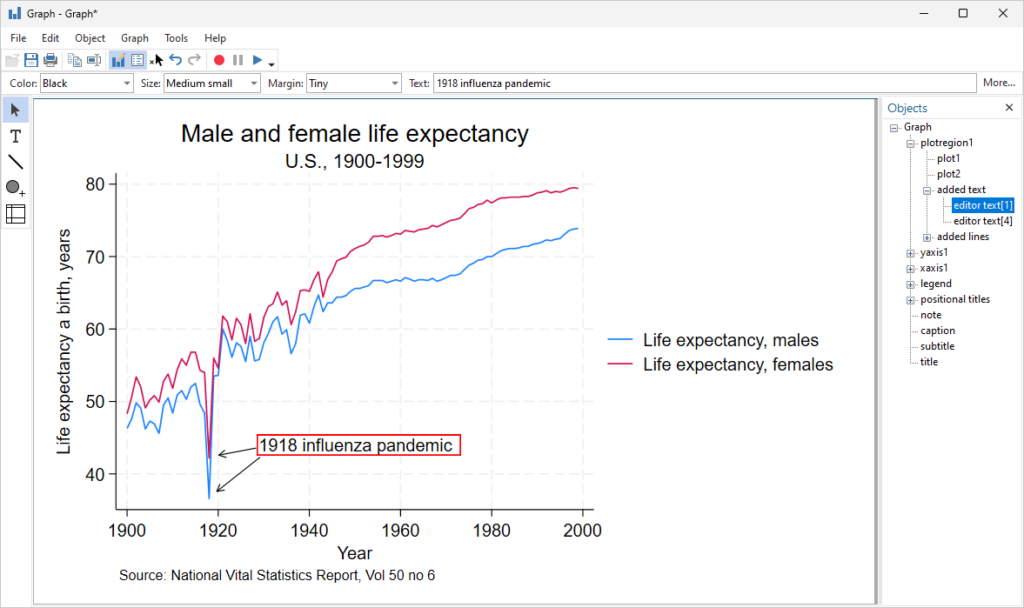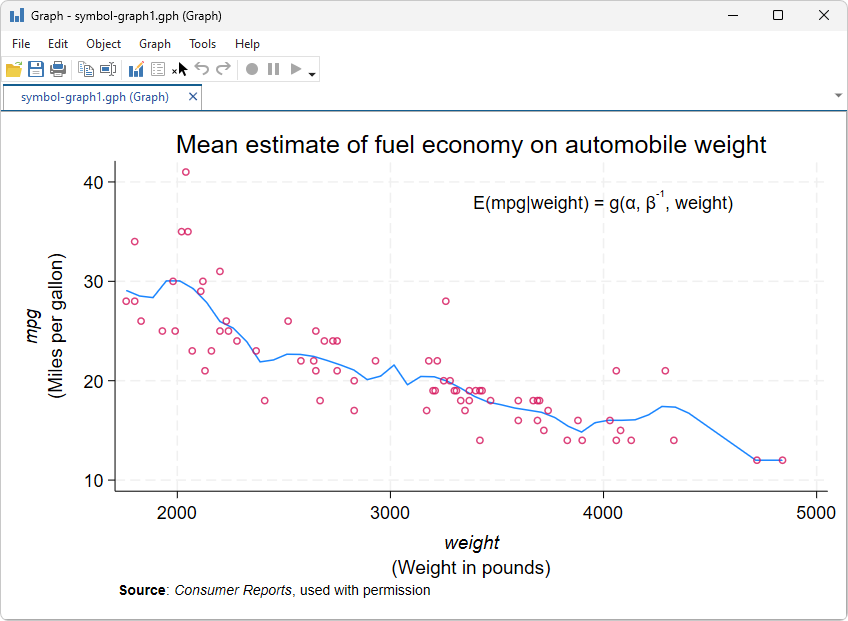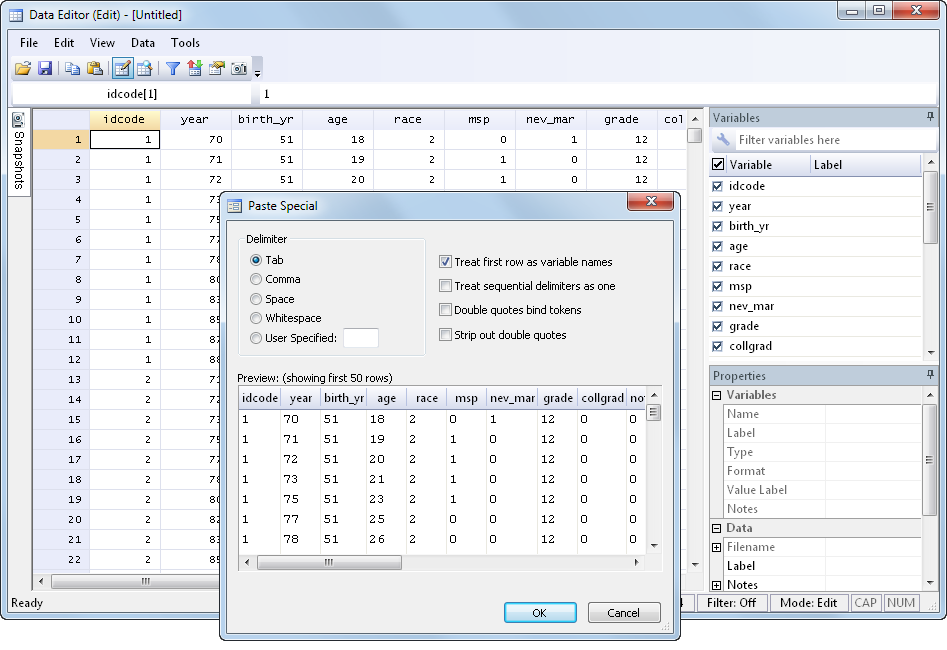In today’s data-driven world, making sense of numbers can be overwhelming. Stata software is a powerhouse tool that brings order to the chaos with its advanced statistical capabilities. This blog post promises easy-to-grasp insights into how Stata transforms raw data into meaningful results.
Get ready for clarity in your analysis journey!
Key Takeaways
- Stata provides advanced statistical tools and methods like Bayesian model averaging and causal mediation analysis, which are vital for nuanced data interpretation.
- The software supports Python integration, enhancing its capabilities in data manipulation and broadening the scope of research possibilities for data scientists.
- It has a user-friendly interface that allows quick navigation and an efficient way to produce publication-quality graphics for sharing results.
- With regular updates, Stata stays current with emerging challenges in statistics, offering users the latest methodologies for their analyses.
- A strong community support system including documentation, forums, netcourses, tutorials, and conferences helps users at all levels maximize their use of Stata.
Understanding Stata Software
Stata software is a statistical software package commonly used by researchers in various fields, including economics, biomedicine, epidemiology, sociology, and more. It offers a wide range of features for data manipulation, visualization, statistical analysis, and automated reporting.
What is Stata Software?
Stata software stands as a powerful tool for professionals who dive into the world of statistical analysis and data management. This software streamlines complex data work, allowing users to perform advanced statistical modeling, simulation, regression, and custom analyses with ease.

With its integration capabilities, Stata software interacts seamlessly with programming languages like Python, enhancing its utility in reproducible research efforts.
Users gravitate towards Stata for its intuitive interface which simplifies the creation of publication-quality graphics and automated reporting features essential in today’s data-driven environment.
The platform adapts to user needs through scalable performance—tackling large datasets quickly thanks to automatic multicore support—and offers flexibility across various operating systems.
Behind this robust system lies unparalleled technical support that guides users through challenging tasks while fostering an interactive community where ideas and solutions thrive.
Check more Data Analytics vs Business Analytics – Find out major differences
Features of Stata Software
Transitioning from the fundamental understanding of Stata software, we dive into its capabilities. Here’s a closer look at the features that make Stata an indispensable tool for technology experts:
| Feature | Description |
|---|---|
| User-Friendly Interface | Technology professionals appreciate Stata for its intuitive user interface. This accessibility speeds up data analysis, allowing users to navigate through options and commands with ease. |
| Advanced Statistical Tools | With a comprehensive array of statistical techniques available, Stata empowers users to perform quantitative analysis and complex statistical modeling confidently. |
| Publication-Quality Graphics | Visualizing data is pivotal in technology, and Stata’s sophisticated graphics tools produce high-quality visuals for presentations and publications. |
| Python Integration | Stata enhances the scope of data science by integrating with Python, enabling more extensive data manipulation and analysis possibilities. |
| Reproducible Research | Ensuring results can be replicated, Stata promotes reproducible research with its robust command syntax and documentation features. |
| Support Resources | From net courses to video tutorials, Stata offers abundant learning resources, supporting both beginners and advanced users in their quest to master the software. |
| Continuous Updates | The latest version of Stata includes cutting-edge updates like Bayesian model averaging (BMA) and causal mediation analysis, ensuring users are at the forefront of statistical methodologies. |

Importance of Stata Software in Statistical Analysis
Stata stands as a cornerstone in the realm of statistical analysis, offering researchers and analysts robust tools to make sense of complex data. Its extensive features facilitate advanced methods such as Bayesian model averaging, allowing for more nuanced interpretations of results.
Users harness Stata’s power to conduct causal mediation analysis, essential for understanding indirect effects within variables. This software enables precise estimation with robust inference techniques that withstand the scrutiny of peer review.
With Stata’s regular updates and additions, users can confidently tackle emerging challenges in data science and remain at the forefront of analytical methodologies. The support programs and resources available through Stata are unparalleled; from detailed documentation to active user forums, help is always at hand.
Conferences foster a community where insights circulate freely among research analysts across various disciplines—ensuring that knowledge grows collectively within this dynamic ecosystem.

Role of Stata Software in Data Science
Stata plays a pivotal role in data science by providing a comprehensive platform for statistical analysis, data visualization, and modeling. Its extensive features such as Bayesian model averaging (BMA), causal mediation analysis, and group sequential designs enable data scientists to explore complex statistical techniques effectively.
With Stata’s support for Python integration, researchers can seamlessly combine the power of Stata with the versatility of Python programming for advanced data manipulation and interpretation.
Moreover, Stata’s capability to generate publication-quality graphics and automated reporting streamlines the process of presenting findings from data analysis. The software’s emphasis on reproducible research ensures that data scientists can confidently manage, analyze, and interpret their datasets while adhering to robust research methodology standards.
In essence, Stata emerges as an indispensable tool for professionals seeking efficient solutions in statistical analysis and interpretation within the realm of data science.

Conclusion
Understanding the importance of Stata software in statistical analysis and data science opens doors to advanced statistical modeling and data interpretation. Users can efficiently manage, manipulate, and visualize data sets for research, biomedicine, economics, or sociology.
Stata’s user-friendly interface and extensive features empower economists and researchers to make informed decisions using robust statistical methods. Embracing Stata nurtures a vibrant community where professionals learn, grow, and innovate in their respective fields with confidence.
Engaging with Stata is an essential step toward harnessing the power of statistics for impactful decision-making in various disciplines.
(Image Credit: Stata)
Frequently Asked Questions
Why is Stata software important in statistical analysis and data science?
Stata is important in statistical analysis and data science due to its powerful features for data manipulation, visualization, statistical modeling, and reproducible research.
How can I benefit from learning Stata for statistical analysis?
Learning Stata can provide you with the ability to efficiently handle large datasets, conduct advanced statistical analyses, and create publication-quality graphics.
What role does Stata software play in research and academia?
In research and academia, Stata is widely used for analyzing survey data, conducting econometric analyses, performing complex simulations, and creating professional reports.
Can beginners with no programming experience learn to use Stata effectively?
Yes, beginners without programming experience can learn to use Stata effectively as it offers a user-friendly interface along with extensive documentation and support resources.
Are there practical benefits to using Stata in real-world scenarios?
Using Stata enables professionals to tackle real-world problems by efficiently managing data, applying sophisticated analytical techniques, sharing reproducible workflows, and presenting findings with confidence.
Author
-

Rajat, a CFA and seasoned SpotSaaS writer, thrives at the intersection of technology and finance. Drawing from his expertise in marketing and product management, he helps users navigate the complex software landscape to find solutions that align with their business goals. By blending his deep understanding of financial decision-making with a passion for emerging technologies, Rajat crafts insightful content that empowers businesses to choose software that drives growth, efficiency, and innovation. His work bridges the gap between technical possibilities and practical business needs, making software selection a strategic advantage for his audience.
View all posts




